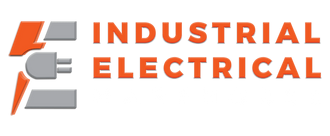In the world of industrial automation, Programmable Logic Controllers (PLCs) play a central role in controlling machinery and processes. One of the essential components of a PLC system is the input and output (I/O) modules. Understanding the role of PLC input output modules is critical for anyone working in industrial control or automation. These modules act as the bridge between the real-world environment and the digital logic of the controller.
What Are PLC Input Output Modules?
PLC input output modules are the interface devices that allow a PLC to receive signals from external devices and send control signals back to the field devices. These modules can be broadly classified into two categories: input modules and output modules.
Input modules are responsible for receiving signals from sensors, switches, and other input devices, while output modules send signals to actuators, relays, and other output devices. Without these modules, a PLC would not be able to interact with the physical world.
Types of PLC Input Modules
PLC input modules are used to collect data from the field. The input devices can vary widely depending on the application, but they typically include devices such as:
-
Push buttons
-
Limit switches
-
Proximity sensors
-
Temperature sensors
-
Pressure transmitters
There are two main types of input modules: digital input modules and analog input modules.
Digital Input Modules
Digital input modules detect discrete signals, meaning the input can only have two states: ON or OFF (1 or 0). These are used with devices like:
-
Mechanical switches
-
Proximity sensors
-
Photoelectric sensors
Digital input modules translate these signals into binary data the PLC can understand.
Analog Input Modules
Analog input modules, on the other hand, process continuous signals. These signals vary over a range and are typically used with sensors that measure variables like:
-
Temperature
-
Pressure
-
Flow
-
Level
Analog input modules convert these signals, often ranging from 0-10V or 4-20mA, into digital values for the PLC to process.
Types of PLC Output Modules
Output modules in a PLC system send control signals to external devices. These devices perform actions based on commands from the PLC program. Common output devices include:
-
Solenoids
-
Relays
-
Lights
-
Motor starters
-
Alarms
Like input modules, PLC output modules can also be digital or analog.
Digital Output Modules
Digital output modules provide ON/OFF control to field devices. They’re commonly used in applications where binary control is sufficient. For example:
-
Turning motors ON/OFF
-
Activating warning lights
-
Operating relays
These modules work with 24V DC, 120V AC, or other standard control voltages.
Analog Output Modules
Analog output modules are used where variable control is needed. For instance, they can control the speed of a motor or the position of a valve. They generate a voltage or current output (such as 0-10V or 4-20mA) that is proportional to a specified value from the PLC.
How PLC Input Output Modules Work Together
The interaction between PLC input and output modules allows for real-time control and automation. Here’s a simplified breakdown of how they work together:
-
Input signal received: A sensor detects a condition and sends a signal to the input module.
-
PLC logic executed: The PLC reads the input, processes the logic written in the ladder diagram or function block, and decides on an action.
-
Output signal sent: The PLC sends a signal through the output module to trigger an actuator.
For example, if a proximity sensor detects an object, the PLC may activate a solenoid to divert the object.
Choosing the Right PLC I/O Modules
Selecting the appropriate PLC input output modules for your system depends on various factors:
-
Type of signal: Digital or analog?
-
Voltage and current levels: Compatible with your field devices?
-
Number of channels: How many inputs/outputs are needed?
-
Environmental conditions: Is the module suited for harsh environments?
Some PLCs come with integrated I/O, while others require separate expansion modules. Modular PLCs allow for greater flexibility and scalability.
Applications of PLC Input and Output Modules
Industrial Manufacturing
In assembly lines, sensors detect positions of products and outputs activate robotic arms, motors, or conveyor belts.
HVAC Systems
Temperature sensors (analog inputs) are used to monitor environments, while analog outputs control variable speed fans or dampers.
Water Treatment Plants
Level sensors and flow meters provide input, and the system adjusts valves and pumps accordingly using output modules.
Building Automation
Light sensors and motion detectors trigger lighting systems, security doors, or alarms via I/O modules.
Troubleshooting PLC I/O Modules
Even the best-designed systems may face issues. Here are common troubleshooting tips for PLC input output modules:
-
Check wiring: Loose or corroded connections can cause false signals.
-
Verify signal types: Ensure the sensor or actuator matches the module type (analog/digital).
-
Use diagnostics tools: Many PLCs offer diagnostic LEDs or software tools to isolate faults.
-
Measure voltages/currents: Use a multimeter to ensure proper signal levels.
Safety Considerations
When working with PLC input output modules, safety must be prioritized. Miswiring or voltage mismatches can damage components or cause hazards. Best practices include:
-
Labeling all wires and terminals
-
Using proper fuses or circuit protection
-
Following manufacturer guidelines
-
Implementing emergency stop and isolation systems
Conclusion
Understanding the function and types of PLC input output modules is essential for anyone involved in industrial automation. Whether you’re designing a new system or upgrading an existing one, the right choice of I/O modules can significantly affect reliability, scalability, and performance.
By mastering the differences between digital and analog inputs and outputs, and how they connect the PLC to the physical world, engineers and technicians can build smarter, safer, and more efficient control systems.
Ready to upgrade or expand your PLC setup? Explore our full range of products:
Visit Industrial Electrical Warehouse to find exactly what your system needs.


